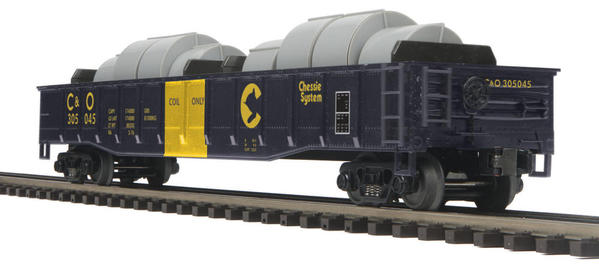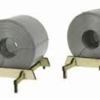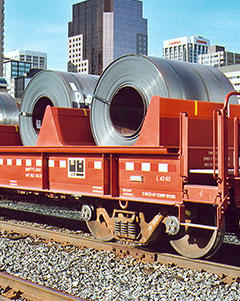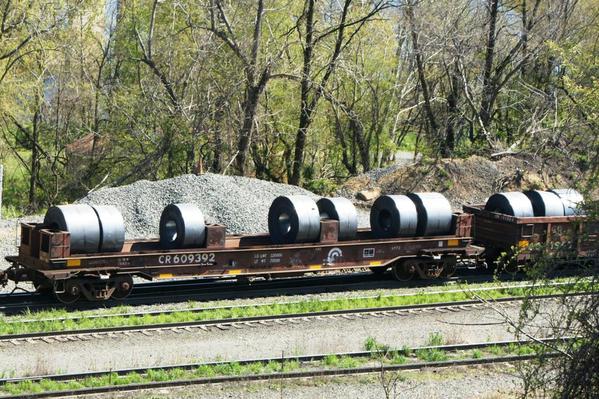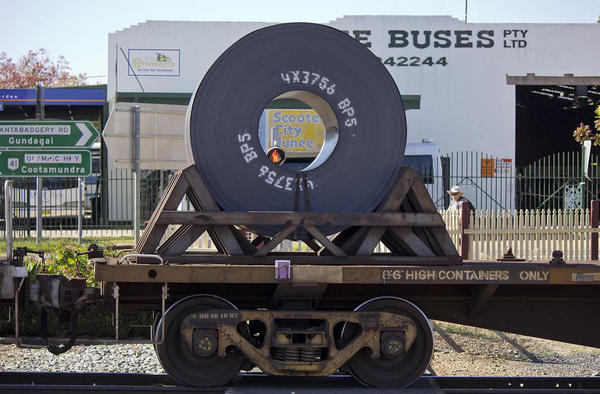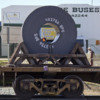For your consideration, here's a close to prototypical guide to loading your normal (non-specialized) gondolas with coils.
Having once worked in a steel mill with coils (tin plating line, strip steel), I am always amused when I see cars like this.
Bear with me and I will explain why. AtlasO makes some very nice coils that are available as separate loads. Weaver used to as well until their subcontractor quit and they themselves closed the business. MTH might offer them as separate items as well. Anyway, here's a photo of the AtlasO coils, which come in 2 sizes.
The one on the left is fully 1.5" or 6 scale feet in diameter. That is a huge coil and, in my somewhat limited experience, fairly rare in occurrence (maybe they've routinely made coils larger since the 1970's, I don't know). I've seen smaller sized coils that went 60,000-65,000 lbs, but I'm ready to arbitrarily assign 60,000 lbs to the larger coil. The smaller coil, still a scale 5 feet in diameter, will be assigned a weight of 50,000 lbs.
OK, so here's a regular (non-specialized) gondola 52.5 scale feet long that we wish to load with coils for shipment to a canning facility, automotive manufacturer, or appliance maker. It's the mid-late 1950s, so coil covered gondolas are not invented yet (1960s for them).
Note the markings, in particular the Capacity (CAPY) one.
Yes, it says 140,000 lbs. The LD LMT (Loaded Limit) marking next to it says 153,700 lbs.
So, if we consider our assumptions for coil weights to be correct, this gondola should be loaded with 2 of the larger (60,000 lbs) coils or 3 of the smaller (50,000 lbs) ones. And you place them over the trucks so as not to stress the spine of the car.
If you arbitrarily make the big one 40,000 lbs. and the smaller one 30,000 lbs., you can place 3 of the large or 4-5 of the smaller ones into the gondola. Again, they should be grouped around the trucks. The next 2 photos are not strictly accurate - no tie downs. But they illustrate the idea of coil placement in the gondola.
Of course, coil weights and gondola load limits vary, so you can't take this as dogma. It's more of a guide.
Have fun and don't overload your gondolas! ![]()
George




